基本资料
邵勇
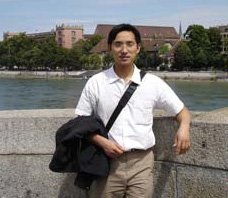
浙江省“万人计划”科技创新领军人才,浙江师范大学“双龙学者”特聘教授,博士生导师。2001年9月-2004年12月,中国科学院长春应用化学研究所电分析化学国家重点实验室获博士学位。2005年2月-2006年3月,获法国教育部资助,在法国Université Louis Pasteur
联系方式
l Email: yshao@zjnu.cn
l 通讯地址:浙江省金华市迎宾大道688号浙江师范大学11幢220室
l 邮 编:321004
学术兴趣及主要研究方向
光/电生物及化学传感器原理及构建
核酸非经典结构的小分子识别
荧光纳米材料及超分子分析应用
天然小分子靶向核酸的药物活性发现
近期主持的科研项目
1.国家自然科学基金项目,极性掺杂驱动的G-四链体可塑性调控及结构开关传感器构建, 2023-2026, 主持;
2.浙江省“万人计划”科技创新领军人才项目,2021-2023,主持;
3.浙江省自然科学基金重点项目,多倍体G-quadruplex界面状态的精准识别及核酸新靶点荧光染料研究,2020-2023,主持;
4.浙江师范大学“名师培育计划”项目,2020 -2024,主持;
5.国家自然科学基金项目,人类端粒G-四链体碱基损伤缺失位点的选择性识别及回稳研究,2017-2020,主持;
6.国家自然科学基金项目,人类端粒G-四链体脱碱基位点的小分子选择性识别及结构稳定化研究,2016-2016,主持;
7.国家自然科学基金项目,DNA脱碱基位点的药物小分子识别:电化学研究及其作用模式分析,2011-2013,主持;
8.浙江师范大学高端科研项目培育资助项目,核酸非经典结构光/电精准识别及传感应用研究,主持;
9.浙江省科技厅公益性技术应用研究计划项目,植物提取物新型核酸染色剂的筛选及应用研究,2014-2015,主持;
10.浙江省自然科学基金杰出青年基金项目,基因损伤碱基缺失的靶向识别生物传感研究,2012-2015,主持;
11.浙江省科技厅“钱江人才”计划项目,药物与DNA非碱基位点的特异性相互作用研究,2009-2010,主持;
12.教育部留学回国人员科研启动基金项目,基于核酸脱碱基位点的有机小分子识别及其分析方法探索,主持;
13.国家重点实验室开放基金项目,药物小分子识别核酸AP site的电化学研究,主持;
14. 日本JSPS合作研究基金项目,法国教育部博士后研究基金,主持。
近期发表的主要论文
1. All-or-none selectivity in probing polarity-determined trinucleotide repeat foldings with a parity resolution by a beyond-size-matching ligand, Analytical Chemistry, 2023, https://doi.org/10.1021/acs.analchem.2c04810
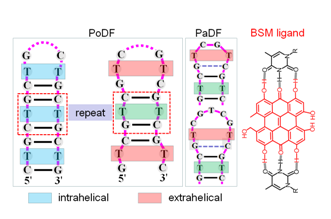
2. Selectively recognizing heptad-interfaced G-quadruplexes bya molecular rotor with an ESIPT emission,Chemical Communications, 2023, 59, 1189–1192
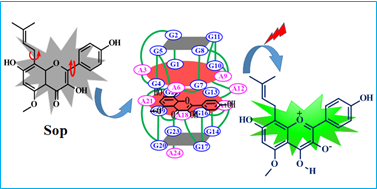
3. Selectivity of natural isoquinoline alkaloid assembler in programming poly(dA) into parallel duplex by polyvalent synergy, Analytica Chimica Acta, 2023, 1241, 340777
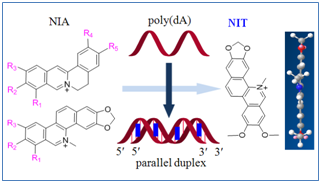
4. Selectively identifying exposed-over-unexposed C-C+ pairs in human telomeric i-motif structures with length-dependent polymorphism, Analytical Chemistry, 2022, 94, 14994–15001
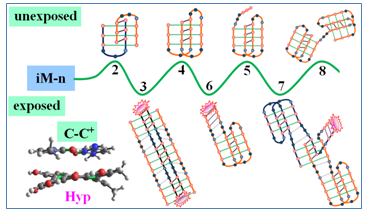
5. Switching G-quadruplex to parallel duplex by molecular rotor clustering, Nucleic Acids Research, 2022, 50, 10249–10263
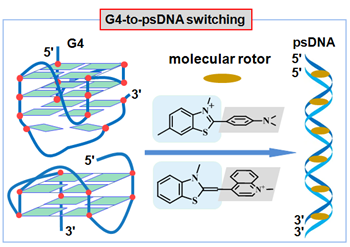
6. Selectively recognizing extrahelical conformations of DNA trinucleotide repeats by a hydroxylated porphyrin ligand,Analytica Chimica Acta, 2022, 1190, 339265
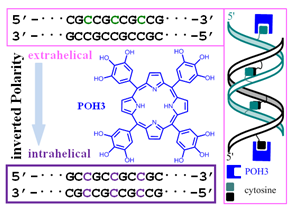
7. A catalytic triplex DNAzyme for porphyrin metalation, Chemical Communications, 2021, 57, 6499–6502
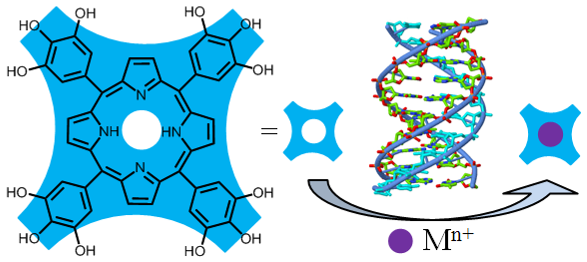
8. NIR light-propelled Janus-based nanoplatform for cytosolic-fueled microRNA imaging, ACS Applied Materials & Interfaces, 2021, 13, 3713–3721
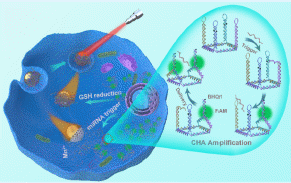
9. A pH-triggered G-triplex switch with K+ tolerance, Chemical Communications, 2020, 56, 7349–7352
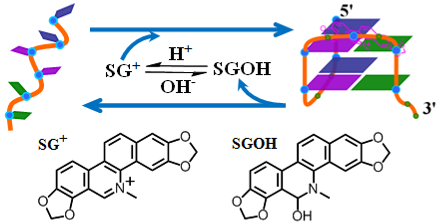
10. G-quadruplex-based photooxidasedriven by visible light, ChemCatChem,2020, 12, 169–174
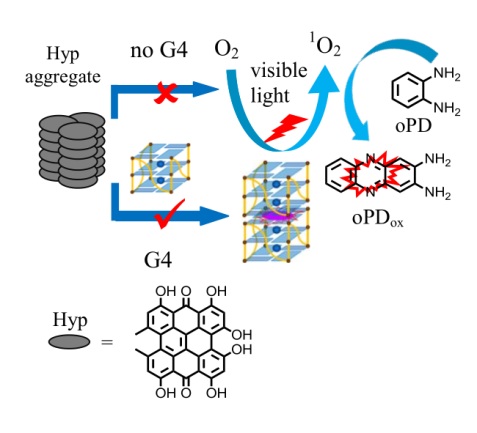
11. Polarity inversion sensitized G-quadruplex metal sensors with K+ tolerance,Biosensors and Bioelectronics, 2019, 145, 111703
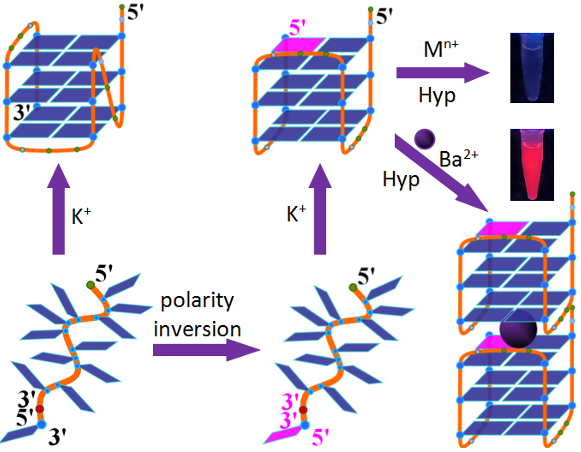
12. Molecular recognition of hybrid-2 human telomeric G-quadruplex by epiberberine: insights into conversion of telomeric G-quadruplex structures, Angewandte Chemie International Edition, 2018, 57, 10888–10893
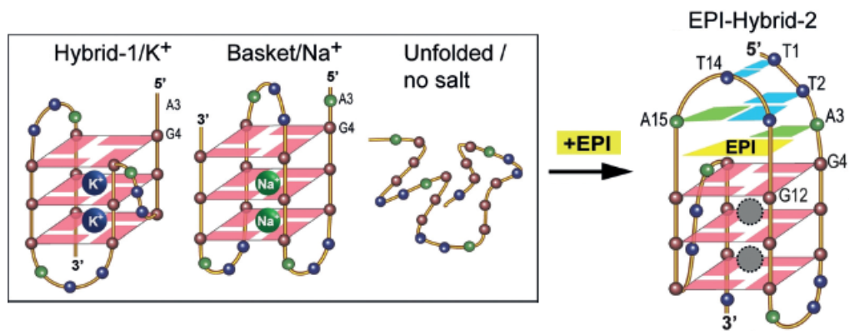
13. Supramolecularly multicolor DNA decoding using an indicator competition assay, Analytical Chemistry, 2018, 90,13183–13187
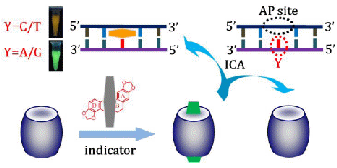
14. G-quadruplex DNA with an apurinic site as a soft molecularly imprinted sensing platform, Analytical Chemistry, 2018, 90, 5552–5556
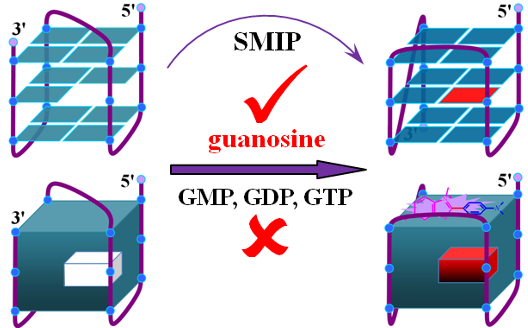
15. Highly sensitive and selective sensor for sunset yellow based on molecularly imprinted polydopamine-coated multi-walled carbon nanotubes, Biosensors and Bioelectronics, 2018, 100, 565–570

16. Adaptively recognizing parallel-stranded duplex structure for fluorescent DNA polarity analysis, Analytical Chemistry, 2017, 89, 8604–8608

17. Prototropically allosteric probe for superbly selective DNA analysis, Analytical Chemistry, 2017, 89, 9299–9306
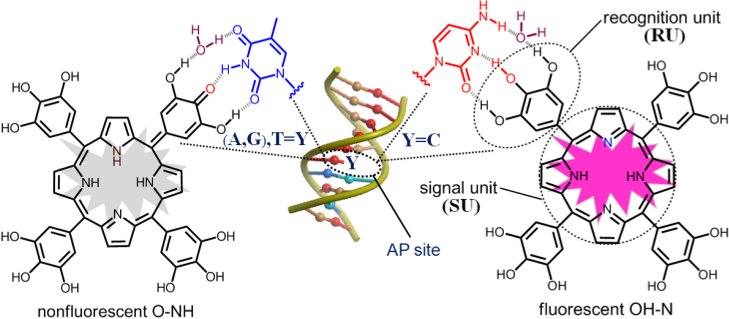
18. DNA duplex engineering for enantioselective fluorescent sensor, Analytical Chemistry, 2017,89, 2181–2185
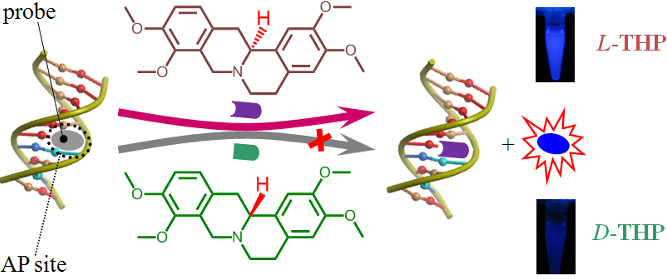
19. Human telomeric hybrid-2-over-hybrid-1 G-quadruplex targeting and a selective hypersaline-tolerant sensor using abasic site-engineered monomorphism, Analytica Chimica Acta, 2017, 964, 161–169
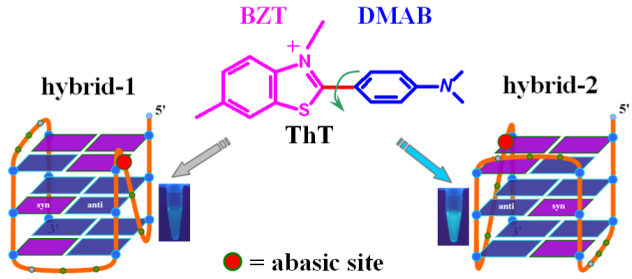
20. Fluorescently sensing DNA triplex assembly using an isoquinoline alkaloid as selector, stabilizer, inducer, and switch-on emitter, Chemistry-An Asian Journal, 2016, 11, 2041–2048
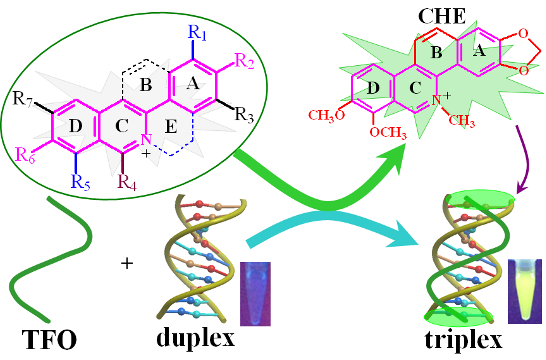
21. Triggered excited-state intramolecular proton transfer fluorescence for selective triplex DNA recognition, Analytical Chemistry, 2015, 87, 11620–11624
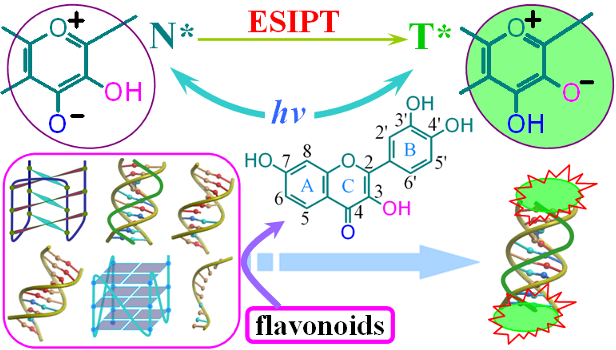
22. Selective lighting up of epiberberine alkaloid fluorescence by fluorophore-switching aptamer and stoichiometric targeting of human telomeric DNA G-quadruplex multimer, Analytical Chemistry, 2015, 87, 730–737

23. Molecular rotor-based fluorescent probe for selective recognition of hybrid G-quadruplex and as a K+ sensor, Analytical Chemistry, 2014, 86, 1622–1631
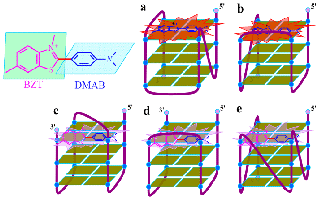
24. Ag nanoclusters as probes for turn-on fluorescence recognition of TpG dinucleotide with a high selectivity, Analytica Chimica Acta, 2014, 850, 78–84
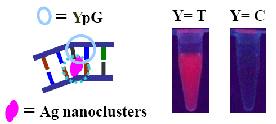
25. Specific recognition of DNA bulge sites by in-situ grown fluorescent Ag nanoclusters with high selectivity, Dalton Transactions, 2014, 43, 1534–1541
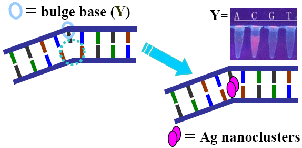
26. Highly thymine-dependent formation of fluorescent copper nanoparticles templated by ss-DNA,Nanotechnology, 2013, 24, 345502. (http://nanotechweb.org/cws/article/lab/54322报道).

27. DNA-hosted fluorescent gold nanoclusters: sequence-dependent formation,Nanotechnology, 2013, 24, 015503 (http://nanotechweb.org/cws/article/lab/51763报道).
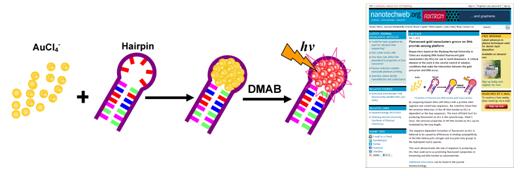
28. Base-stacking-determined fluorescence emission of DNA abasic site-templated silver nanoclusters,Langmuir, 2012, 28, 15313–15322(封面文章报道)

29. Gap site-specific rapid formation offluorescent silver nanoclusters for label-free DNAnucleobase recognition,Analytica Chimica Acta,2012, 724, 86–91

联系方式
l通讯地址:浙江省金华市迎宾大道688号浙江师范大学物理化学研究所220室
邮 编:321004
lEmail: yshao@zjnu.cn






 您的位置 :
您的位置 : 
